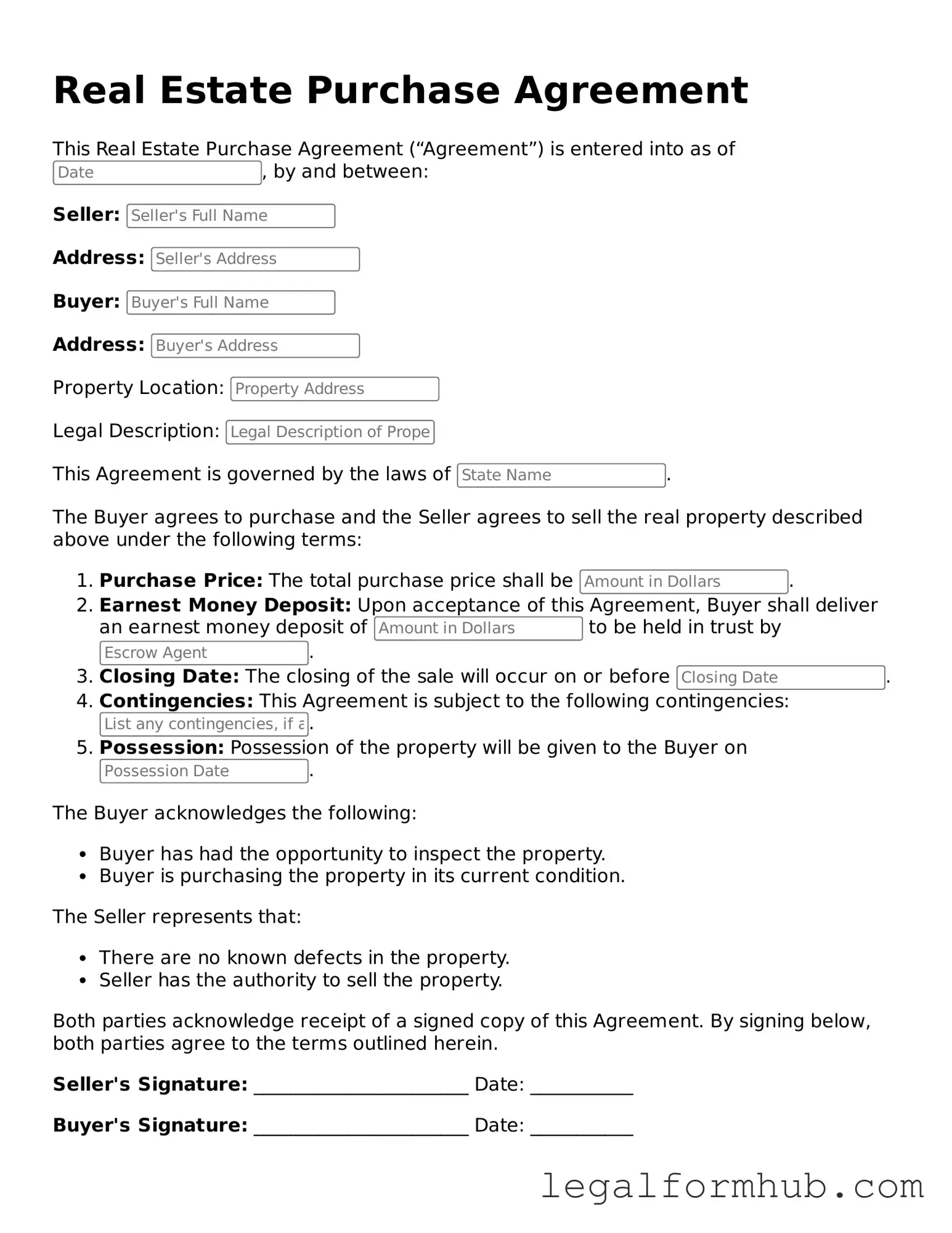The Real Estate Purchase Agreement (REPA) shares similarities with the Lease Agreement, which outlines the terms under which a tenant may occupy a property owned by a landlord. Both documents serve as binding contracts, detailing essential elements such as the duration of the agreement, payment terms, and responsibilities of each party. While a REPA focuses on the sale of property, the Lease Agreement is concerned with temporary occupancy, yet both require clear communication of terms to avoid disputes. Understanding the nuances in these agreements can help parties navigate their respective rights and obligations effectively.
Another document akin to the REPA is the Option to Purchase Agreement. This agreement grants a potential buyer the right, but not the obligation, to purchase a property at a predetermined price within a specified timeframe. Like the REPA, it includes key details such as the purchase price and conditions for exercising the option. However, the Option to Purchase Agreement serves as a preliminary step, allowing buyers to secure a property without committing immediately, whereas the REPA finalizes the sale. Both documents necessitate clarity to ensure that all parties understand their rights and responsibilities.
The Purchase and Sale Agreement (PSA) is also similar to the REPA, as it facilitates the transfer of real estate from seller to buyer. Both documents outline the purchase price, property description, and contingencies that must be met before the sale is finalized. However, the PSA may include additional clauses that address specific conditions or requirements unique to the transaction. While the REPA is often used in residential transactions, the PSA is more commonly utilized in commercial real estate deals, demonstrating that both serve the fundamental purpose of detailing the terms of a property transfer.
In the realm of property transactions, the use of documents like the Quitclaim Deed form is essential for ensuring smooth transfers of ownership. While the Quitclaim Deed allows parties to convey property rights without warranty, it is crucial for individuals to understand their implications. For those looking to initiate such processes, the Quitclaim Deed form provides a straightforward way to formalize the transfer.
Additionally, the Listing Agreement bears resemblance to the REPA, as it establishes a relationship between a property owner and a real estate agent. This document outlines the agent's authority to market the property, the commission structure, and the duration of the listing. While the REPA is focused on the sale itself, the Listing Agreement is a precursor that sets the stage for the sale by facilitating the process of finding a buyer. Both agreements highlight the importance of clear expectations and responsibilities to ensure a smooth transaction.
Lastly, the Seller's Disclosure Statement is another document that complements the REPA. This statement provides prospective buyers with vital information about the property's condition, including any known defects or issues. While the REPA formalizes the sale, the Seller's Disclosure Statement plays a critical role in the due diligence process, allowing buyers to make informed decisions. Both documents emphasize transparency, which is essential in building trust between buyers and sellers throughout the real estate transaction.
